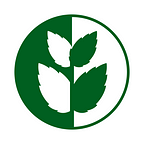What Is Permaculture?
Permaculture is a type of land micromanagement that takes inspiration from what already exists in nature.
Permaculture was developed in opposition to modern agriculture and especially, monoculture, which sees fields of one or two crops only being grown on land.
Permaculture has shown to be a healthier type of culture as less dependent on fertilizers and other chemicals.
One could define a permaculture garden as an ecosystem of its own, with different species of plants and insects all playing a role and supporting another species.
History
Permaculture is a term coined by Bill Mollison, an Australian biologist, and David Holmgren, an Australian environmental designer.
Both met at the University of Tasmania where Mollison taught environmental psychology and Holmgren was a student.
The idea for permaculture began when Mollison and Holmgren noticed that modern agriculture was unsustainable.
First, it rested on fertilizers and other chemicals available in finite demand. Second, it was depleting the soil of its nutrients. Third, it polluted land and water.
Behind such practices stood the principle that nature had to be tamed and controlled with engineering.
This didn’t seem holistic and viable in the long term, so they decided to think in the opposite way.
Permaculture is a philosophy of working with, rather than against nature; of protracted and thoughtful observation rather than protracted and thoughtless labor; and of looking at plants and animals in all their functions, rather than treating any area as a single product system.
Bill Mollison
The idea was to consider agriculture in the context of a full ecosystem instead of focusing on growing only one plant.
Permaculture comes from “permanent agriculture”, which highlights well the philosophy of the practice.
Principles
- Observe and interact: the purpose isn’t to bend nature to one’s will, but to work alongside it.
- Catch and store energy: make sure to collect resources when you have too much of it (eg: water) to use them when they become rarer.
- Obtain a yield: focus on techniques that provide substantial results.
- Apply self-regulation and accept feedback: Discourage inappropriate activity to ensure that systems function well.
- Use and value renewable resources and services: Use renewable resources and avoid using finite ones.
- Produce no waste: Re-use as much as you can. Waste nothing.
- Design from patterns to details: Look at what nature does and reuse these patterns.
- Integrate rather than segregate: design a system where different elements relate to one another.
- Use small and slow solutions: Small and slow systems are more sustainable.
- Use and value diversity: Diversity reduces system-level vulnerability to threats and fully exploits its environment.
- Use edges and value the marginal: the most interesting things happen in the border between things.
- Creatively use and respond to change: A positive impact on inevitable change comes from careful observation, followed by well-timed intervention.
Results
Permaculture has mostly advantages and very few disadvantages.
First, permaculture enables you to have higher yields from your garden.
Second, because the garden is self-sufficient, it takes less time to take care of it in the long term. Some permaculture enthusiasts highlight that all they must do is water it during periods of drought.
Third, it’s both cheaper and more sustainable as there is no need for fertilizers or pesticides.
The only disadvantage really, is that it’s quite complex to set up and it takes time.
Because the success of the project depends on each of its parts, obtaining satisfying results take time and effort.
It’s also not possible to engineer permaculture on a grand scale like modern agriculture.
Conclusion
Permaculture is an innovative and sustainable type of gardening for people that want to grow their own food.
Based on principles found in nature, such a garden is self-sustaining and promotes sustainable practices.
